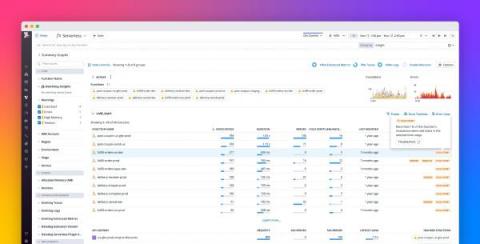Operations | Monitoring | ITSM | DevOps | Cloud
Latest News
Optimizing Azure Cost with Azure Cost Management
Zero-Friction AWS Lambda Instrumentation with external extensions
If you’ve been in the software business for some time, you’ve probably noticed that creating software isn’t only about adding features. There are usually many different tasks involved. You have to test your system, fix bugs, and ensure it keeps working over its lifetime.
The Hidden Costs of Serverless Observability
The growing popularity of serverless architectures has led to an increased need for solutions to the modern challenges of microservice observability—one of the most critical components for running high-performing, secure, and resilient serverless applications. Observability solutions have to break through the complexity of serverless systems, and with the right stack, observability enables not only fast and easy debugging of applications, but drives optimization and cost efficiency.
Serverless roundup at AWS re:Invent 2022
AWS re:Invent was back and BIG last week in Las Vegas. Approximately 50,000 AWS customers and partners got together in Las Vegas to learn, talk shop, and maybe attend a couple of parties here and there. Not only did Lumigo have a booth, but our own Saar Tochner, R&D Team Lead and AWS Community Builder gave a well-received talk on Lambda extensions.
Production testing: smoke tests with Cypress, CircleCI, and AWS
“Testing your production environment” refers to the practice of running tests on production servers, using actual data from real users. Production testing doesn’t replace other methods like unit or integration testing. Instead, it extends them. Smoke testing is one approach that Lumigo has implemented to test our own production environments.
Cleaning up your microservice resources
Managed services and serverless deployments have become increasingly popular tools in the software development process. This means that organizations are focusing less on infrastructure resources and more on the functionality and security of applications. Managed services—such as the applications like DynamoDB, Step Functions and API Gateway that are crucial to serverless architectures—come with associated costs.
Mitigate cold starts in your Java Lambda functions with Datadog and AWS Lambda SnapStart
AWS Lambda enables engineering teams to build modern, scalable services without the need to provision underlying infrastructure resources. But monitoring Lambda functions requires visibility into performance indicators that differ from those of traditional architectures—and cold starts are a key example.
AWS Lambda cold starts are about to get faster
Over the past few years, AWS has made incremental improvements to Lambda’s cold start performance. Nowadays, cold starts are much less an issue for most functions, unless you’re using Java or.Net Core.











